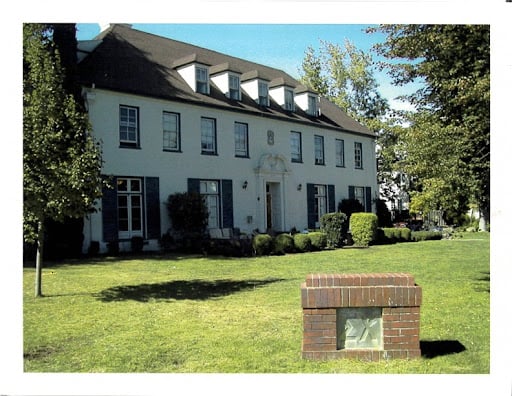In April 1965, the all-white Stanford University chapter of Sigma Chi fraternity Alpha Omega offered a bid to Kenneth Washington ’68, a Black student. Soon after, the Stanford chapter was suspended by its national parent organization — garnering national attention amid the civil rights movement.
“To pledge an African American was an unwritten but strictly banned, discriminatory policy of the national fraternity,” said Pat Forrester ’65, a member of the chapter involved in admitting Washington to the fraternity.
Now, alumni of the fraternity are seeking to confer historical landmark status for the old Sigma Chi house, located at 550 Lasuen Street. An alumni board submitted its application to the California Office of Historic Preservation and is awaiting its review.
The alumni board is citing the house’s role in the civil rights movement as grounds for establishing the house’s state and federal historical statuses. The Stanford chapter’s rejection of Sigma Chi’s national racial exclusionary policy brought the issue of race in Greek life recruitment under a spotlight.
“We were pioneers in combating racial discrimination of the national fraternity,” Forrester added.
With the support of Stanford President J. E. Wallace Sterling’s administration, the Stanford chapter continued to fight for racial equality in the years that followed. A number of colleges across the country joined the movement ignited by Alpha Omega, and the Stanford chapter returned to the national organization in 1974 after it ended its discriminatory rules.
The Sigma Chi house at 550 Lasuen Street became a landmark in the nation’s civil rights movement, according to Forrester. He said that he believes Stanford fraternities have played “an important role in providing leaders for the University” for many years.
The action by alumni comes amid renewed efforts to reincorporate the Sigma Chi fraternity back into the fabric of campus life — the fraternity is currently planning to participate in the rush process this spring.
The Sigma Chi chapter on campus was suspended in May 2018 after the Sigma Chi International Fraternity organization conducted a membership assessment and “determined there were few members who would carry the chapter forward in a positive manner.” The review was conducted due to a party held by the fraternity that same month at which Stanford students suspected a drugging incident by a non-Stanford affiliate. The allegations were not proven, and Stanford did not proceed on any charges relating to the incident. The chapter went to the Organization Conduct Board (OCB) for underage drinking and failure to register the party.
Following the suspension, Stanford and the Alpha Omega Housing Corporation (AOHC), a collection of Sigma Chi alumni in charge of the house lease, filed dual lawsuits against each other in 2019 after the AOHC refused to vacate the property after being asked to leave. Stanford attempted to evict the chapter on an unlawful detainer action, and the AOHC sued Stanford for early and unlawful termination of the lease. Stanford lost the lawsuit in 2020.
Alumni initiated the reinstatement process in 2021 after the University and AOHC reached an agreement that allowed Stanford to use the property for University housing through the end of the lease term in August, 2023.
John Martin ’80, a former Alpha Omega president and AOHC board member, said the historic status of the house will “remind students at Stanford to be aware of the pathbreaking role Alpha Omega played in achieving civil rights on campus and debunk the notion that fraternities are only organizations that foster reckless behavior.”
Martin emphasized that racially discriminatory acts remain part of the fabric of American life.
“The designation is a potent reminder of the power to effectuate change in that area,” he said.
AOHC chair Robert Ottilie ’77 echoed the significance that conferring historical status to the house would have on campus — only the third such building to attain such a designation at Stanford.
“The historical status communicates a message throughout the campus that real character can be developed by young people working in current or developing organizations,” he said.
The designation will serve as a “badge of courage” for all those students in 1965 who gave up their connection to their fraternity over a principled stand in support of a man that they really liked and wanted to be one of their brothers, Ottilie added.
Future plans for the house include the continued operation of “Summer Chi” — a summer residency program for Stanford students — and reapplication to the Stanford Board of Trustees to renew the ground lease for housing the Sigma Chi chapter.
In addition, Sigma Chi plans to participate in the Interfraternity Council’s rush process in spring quarter. Board members hope to reestablish the chapter and populate the house with new members to continue the traditions Sigma Chi has fostered at Stanford since it began its presence on campus in 1891 — the same year the University was founded.
“It is our hope that we can maintain a positive presence on campus for the immediate and distant future,” Martin said.
This article has been corrected to reflect that the Stanford Sigma Chi chapter was suspended after a review process of the parent organization; Stanford lost the lawsuit to evict the chapter and the University and AOHC reached an agreement that allowed the University to use the house for campus housing. The Daily regrets this error.
